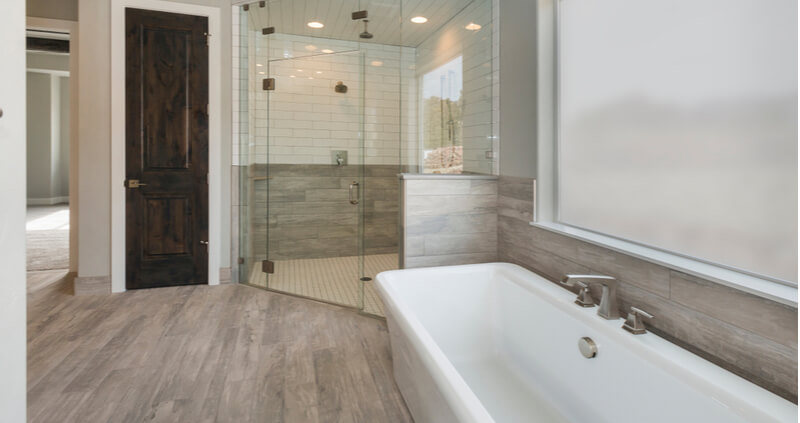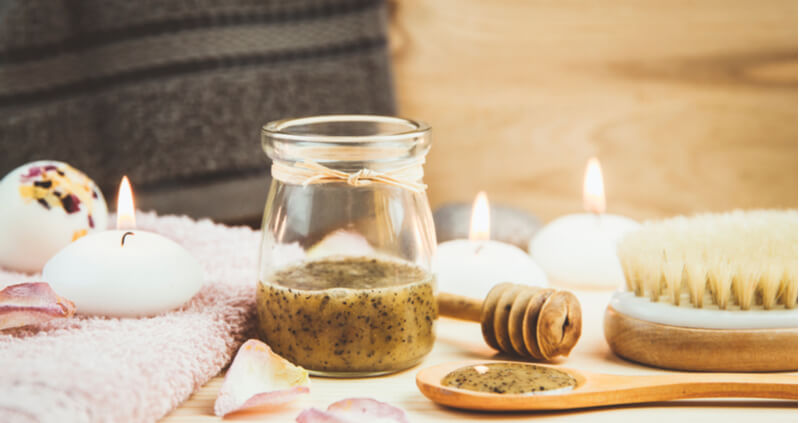Revered for its many healing and relaxation properties, the steam room has risen in popularity over the years. In response partly to a busier modern world rife with stress, the sauna environment it provides has been linked to remedies, through relief, for aches and pains. Not only physical relief from pain, but steam rooms have been known to nurture psychological wellness too.

Steam rooms help to promote healing, relaxation, and comfort in the human body. Where a sauna circulates dry heat into a small room, a steam room offers a different kind of heat. A sauna environment usually sources its heat from rocks or a stove, whereas steam rooms rely on a generator and boiling water. This crucial difference means that a steam room has added, if invisible, health perks because it also produces humidity along with moist heat.
Typically, steam rooms have felt almost exclusive as a costly perk with the likes of a gym membership or a health club. Yet, it’s easier than you think to transform an everyday wetroom into an at home steam room.
Your Own DIY Steam Room
You may never have considered it in the past, but you can casually transform your everyday wet room into a steam room. To replicate a steam room, you’ll need space, heat and ambience in equal measure. Whilst the health benefits are abundant, it’s also worth considering safety in setting up your new at home steam room. Before embarking on your own steam room, considering adequate safety measures should always be a priority. It can help, for example, to have someone else at home with you.
With four simple tips, your ideal transformation doesn’t have to feel like a chore.
1. Increase the temperature range of your water heater
For ideal results, you’ll need an upper limit to introduce true heat into your wet room and allow it to circulate in a relatively confined space. Typically, this temperature will start at 45 degrees and, more importantly, will have a humidity of 100%.
The closer your heat source, such as a boiler, the better the results of your steam room. If you have a storied house, with multiple wet rooms, nominate the space closest to your source of heat.
2. Think small
The size and location of your steam room matters. A lower ceiling will trap in moist heat better than a high one, but you’ll want enough space to fully sit back and relax. If you’re looking to use space conveniently, try a home steam room shower.
3. Doors and Windows
Being familiar with the architecture in your wet room can help you plan better. Windows, for example, will need to be firmly fastened and insulated against wandering steam, preventing escape. Pulling down blinds helps not only to curb draft, but also to block out the outside world. Likewise, placing a towel at the bottom seam of the doorway can help trap steam in the room. When assessing your wet room, the objective is to trap in as much heat as possible.
4. Ambience is key.
Ambience is a setting and character. In creating a steam room that answers to a healing, relaxing atmosphere, you can consider scents, candles, and music. Eliminate any sources of stress, such as outside lights or noise, and instead introduce more calming agents into the space. Using oil, candles, or even natural foliage such as eucalyptus leaves, you can boost the mood of your steam room through aromas. Consider soothing scents such as the likes of jasmine or rose too.

What Are the Benefits of a Steam Room?
Offering a range of benefits, the steam room has been popular with many for its known medical perks and its ability to facilitate restful relaxation. It can also remedy various aches and pains for those leading busy or sporty lifestyles, using moist heat to accelerate a natural healing process in the body. An at home steam room, unlike a public or communal one, offers a greater sense of catharsis and privacy for the user, too.
Yet, as ambience is crucial to your steam room, you can use oils and other aromas to heighten the sense of tranquillity. In many scenarios, aromatherapy can be an ideal companion to your DIY steam room as it invites natural scents to elevate the best parts of your restful, healing environment.
Reduction in Stress
Stress can hold the body in a sort of harmful paralysis – a state that affects both your physical and mental wellbeing. Removing that feeling, and freeing yourself from stress, isn’t an easy task.
A steam room offers peaceful respite, a moment of quietness and downtime, which can sooth your mental wellness. Aside from nurturing your mind, the steam will stimulate the body to release endorphins, the happy hormone, that helps to eliminate stress. In addition, steam can help reduce the levels of cortisol in your body, which leads to a more restful, relaxing experience.
Aromatherapy can bolster your psychological wellness through calming scents and smells. Lavender, as a scent, is known to help improve relaxation. Other woodier scents, such as frankincense oil, also help to reduce anxiety. If you’re looking for a more sedated scent, vanilla can be restorative for the body, mind and spirit.
Better skin care and health
Heat, in abundance, will help cleanse your skin. Steam rooms promote a healthy sweat, which in turn opens your pores and encourages a kind of healing and recovering in your skin. In particular, heat cleanses the skin by rinsing away harmful dirt, grit and decayed skin trapped on the top layers. Yet, steam can also eliminate deeper, ingrained toxins that are invisibly harming your skin. It has been known, specifically, to help with cases of acne and the process of detoxification.
A routine visit to your at-home steam room can help curb the unwelcome effects of toxins, whilst boosting your complexion. A citrusy favourite, Bergamot oil carries helpful anti-bacterial properties to combat skin blemishes too.
Workout recovery
For those with a sporty lifestyle, familiar aches and pains will surface (and resurface) after the workout period, often delayed. Valuable muscle growth can be encouraged in this period. Steam can be used to reduce recovery delays and, instead, promote healthier growth.
Acting like a heat therapy, the steam can calm aching and stiff joints, whilst preserving muscle strength by reaching deep into the tissue. Moist heat, circulated from a steam room, has been medically proven to more quickly and effectively promote muscle recovery.
A useful, healthy influence, Marjoram is an oil that has been typically used for massage and muscle recovery. This also carries soothing properties.
Promotes the immune system
Whilst not an alternative to modern medicine, steam rooms can certainly be a beneficial companion to your everyday health and wellbeing. Steam rooms have been known to alleviate brewing colds and infections by slowing, if relieving, the symptoms. By introducing your body to extreme differences in temperatures, you’re training your immune system to respond better to those changes.
Rosemary, as a popular favourite, has been known to help manage headaches, arthritis and other muscle pains. For symptoms more like nausea, ginger carries healing properties to fight back feelings of sickness.
Burns away calories
An essential tool for those leading athletic lifestyles, steam rooms are known to stimulate a better bodily response to diets and exercise. A steam room keeps your heart rate elevated for longer, which helps burn away unwanted calories.
Clears your head (and lungs)
Steam can get deep beneath the surface. When the body is exposed to moist heat, it encourages a deeper, healthier, breathing that isn’t so shallow. Sometimes referred to as steam therapy – or steam inhalation – this technique uses the health benefits of steam to safely address colds and infections in the body. Rather than eliminate foreign invaders entirely, steam helps to clear congestion and the sinuses. It’s a preferred home remedy for those feeling blue with a brewing infection.
Not only a medical favourite for surface wounds, but the natural properties of eucalyptus can also helpfully alleviate heavy congestion issues deeper in the body. Alternatively, try peppermint oil for a heavier, if pleasant, scent.
Popular for healing and wellness, a DIY wet room can be an easy, if therapeutic, transformation for your home. With a bag of tricks and tips, you can convert your existing wetroom into a steam room and access all the health benefits without a costly membership to a club or gym. Steam rooms invite relaxation, healing, and meditation as well as mental and physical rest and recovery – through a thoughtful balance of silence, heat, and optional oils.
Visit our gallery for wetroom inspiration or read more about the further Benefits of a Wetroom.









